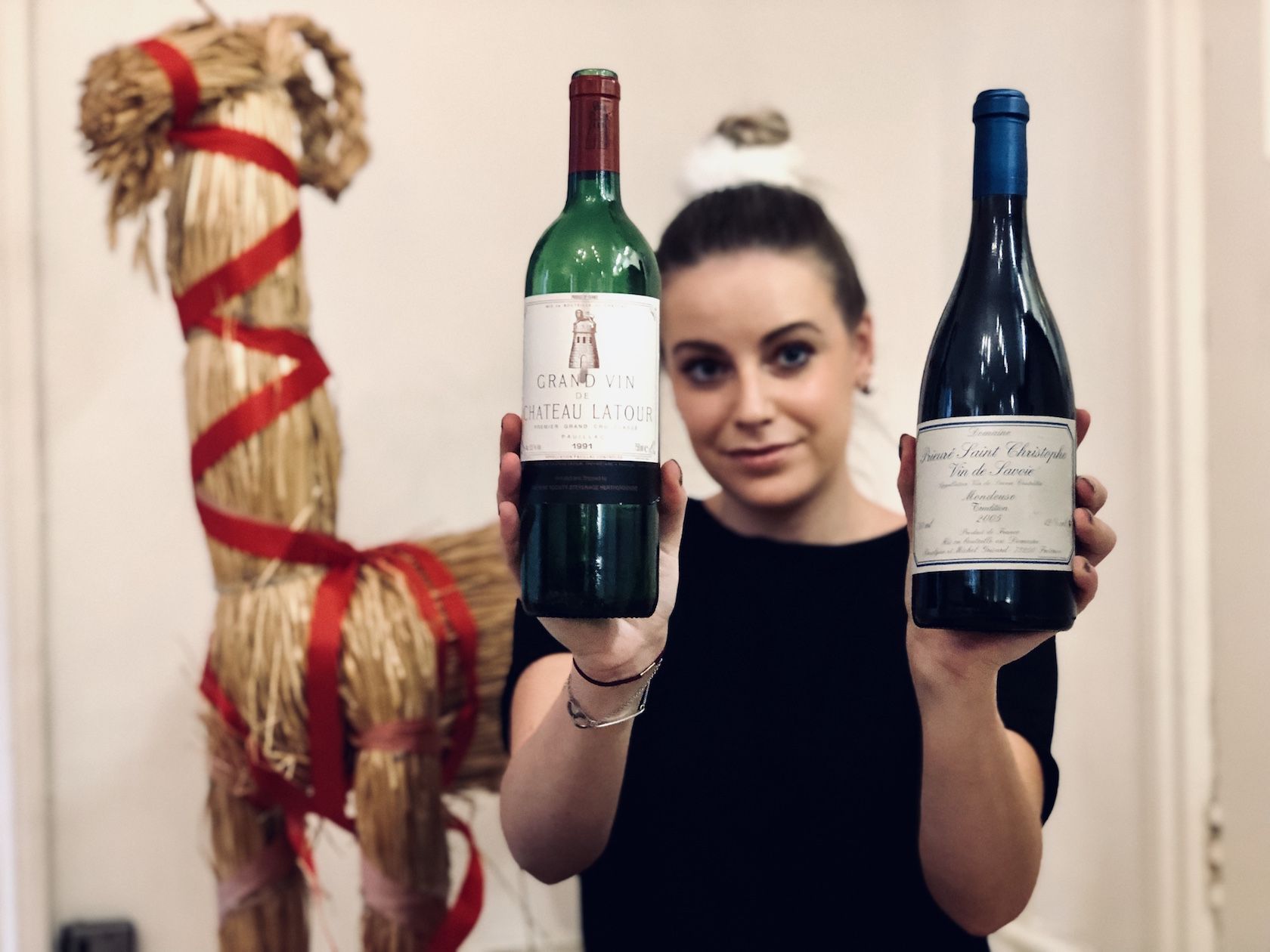Since writing about wine – sometimes from obscure grape varieties – Rasmussen has been asked to sit as a judge, in 2018, for example, judging the 3ème International Trophéede la Mondeuse.
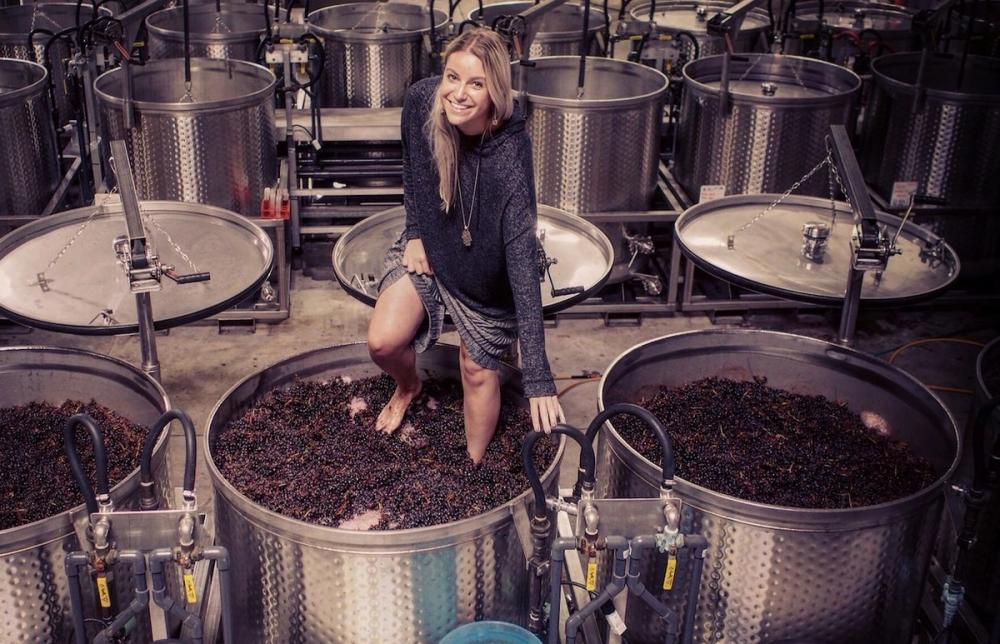
One of the year’s most memorable winery visits – at Jamie Kutch
We know that my top picks of 2017 turned into an Ode to Wine, so it is with trepidation that I sit down to write this for fear it may become a novella, for 2018 brought with it quite the army of special bottles.
Editor Peter Dean always asks us to pick our Top 10, but as I sit here reading one of my Christmas presents, Hugh Johnson’s “Good Bits from 55 Years of Scribbling” I hope he would agree with my alternative offering; to not pick my top 10 and to instead write about the most memorable wines of the year (and there are more than ten). In his words; “Always scribble, scribble, scribble.” Thus, here is a combination of this year’s scribbles.
There are certain wines that we seek out and bundle up to distribute amongst our friends like hunter gatherers; wines that have such questions under their corks that we return to them time upon time and venture out to the very depths of metaphorical vinous forests to find them. These won’t be confined to 2018; the Richard Leroys and Domaine de Miroirs are wines that I will continually return to, to ponder on the questions that they ask us. To say they are special would be to undermine them; these are otherworldly.
As I close the bung on this year, I can’t help but ponder that the friendships that we form along the way are as important as the wines; friendships that become lifelong bonds through the places, grapes, vines, vessels and liquid that bind us. The following were all wines shared with old and new friends and I thank them all dearly; we sail this world of vinous tributaries together.
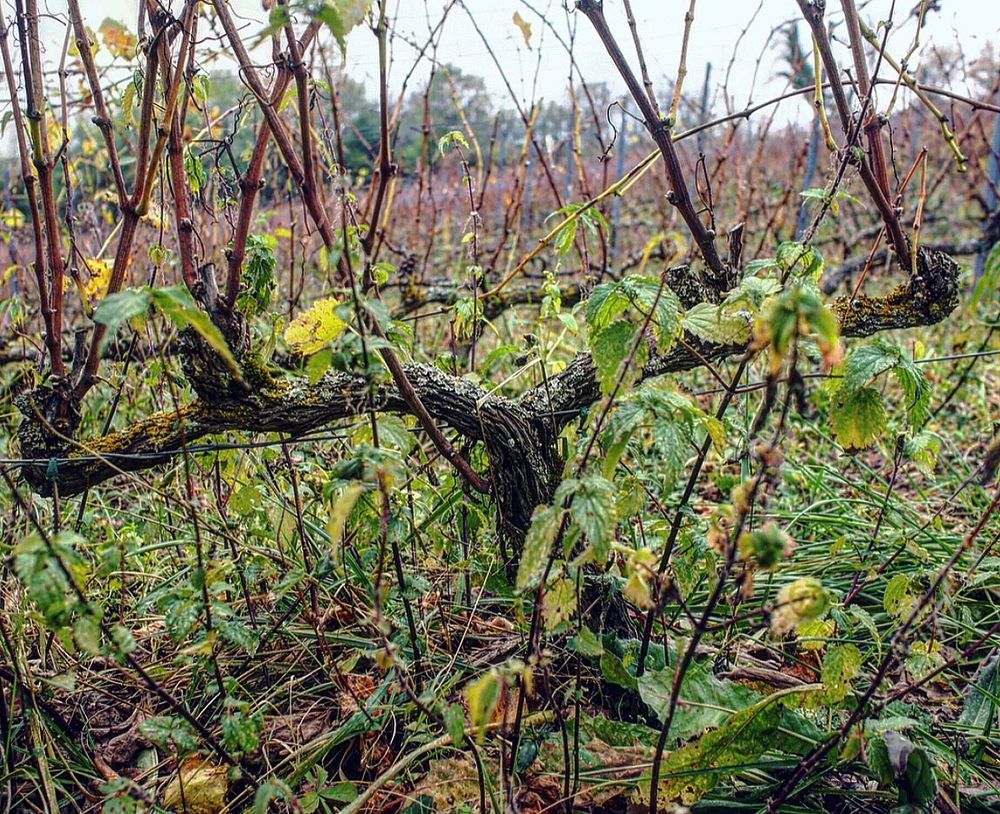
Mondeuse vines
First visits
The variety of the year for me has been Mondeuse. My (somewhat) obsession led to eventual correspondence with José Vouillamoz. Next thing I knew, there I was, standing in the Savoie for the first time with José, Franck Merloz, Wink Lorch and Philippe Héritier, gazing unto Philippe’s field of biodynamic Mondeuse (he also breeds biodynamic snails, FYI, and they’re delicious). I beamed.
We later sat and judged the 3ème International Trophéede la Mondeuse, for which I will publish a separate report. It reaffirmed the incredible quality that this lesser-known variety is capable of, setting a bar for the 4ème. The winner was previously unknown to me; Mondeuse de Montagnieu by Maison Bonnard – a fantastic biodynamic Mondeuse from Bugey; a Bugey victory!
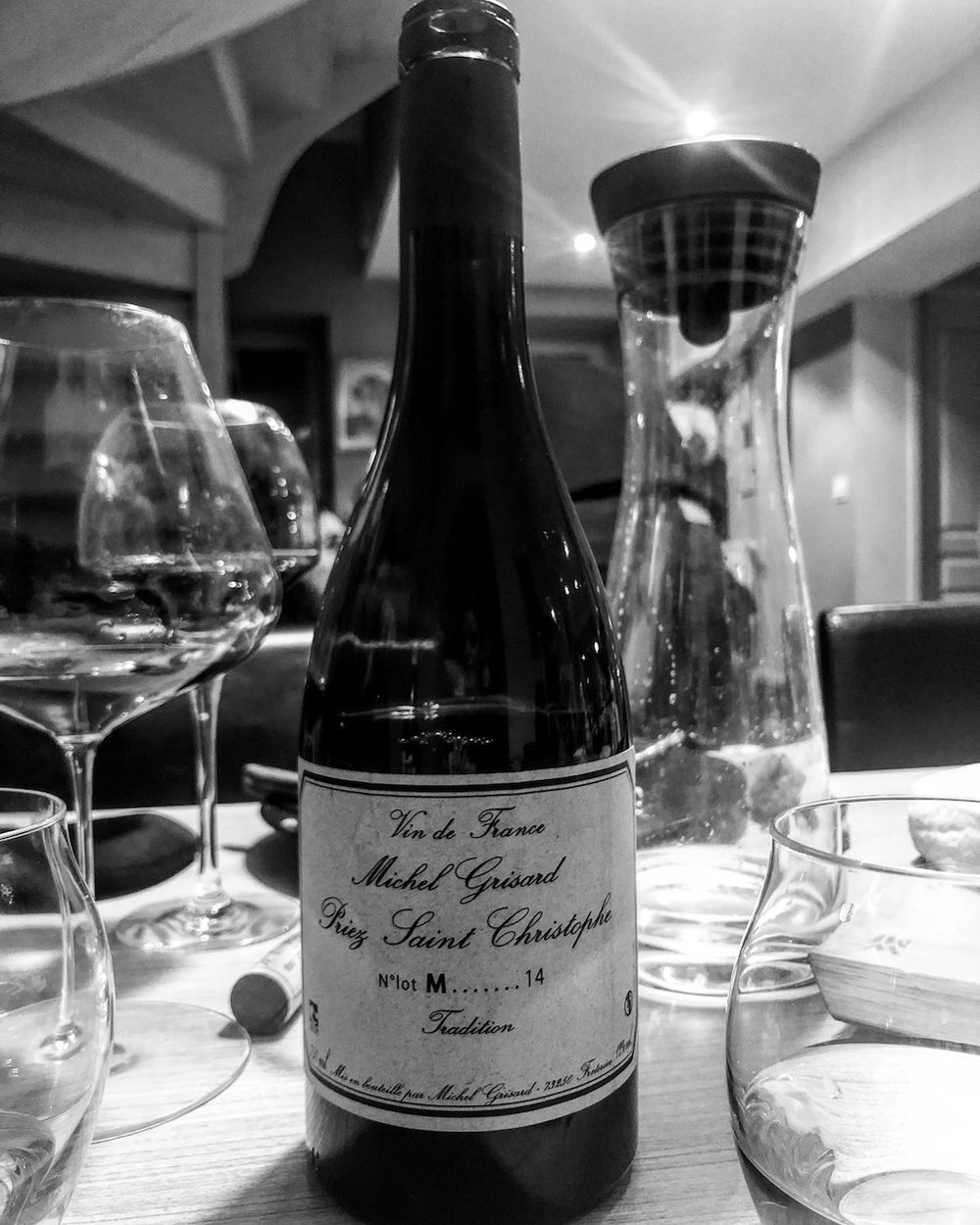
Aside from this, my Mondeuse moment of the year, which also takes the Wine of The Year, was drinking Michel Grisard’s Priez Saint Christohe “M……..14” in wonderful company in Burgundy. It took pepper complexity to a whole other level. I don’t score, but for this I scribbled, “A one-million-out-of-one-million sort of wine.”
2018 also saw my first trip to deepest rural Austria. It saw me fall for many wines, and it has become a country to which I am greatly attached. A small selection includes the following…
Gut Oggau’s Family Reunion Rosé 2016, of which I wrote “Captivating, expressive and honest. Perhaps the finest rosé I have tasted to date. It would actually seem a shame to sling the term of rosé at it, its expression far exceeds any form of boundary of vinous terminology. A true wine, with a deep soul.”

Tasting Gut Oggau’s Family Reunion Rosé 2016
Two rosés that have since zoomed past the periphery to rival the top spot are Claus Preisinger’s DOPE 2017, and the mesmerising Kolfok Querfeldein 2016. Is it fair to say that Austria does “rosé” like nobody else? These are fine wines in their own right.
Tasting in the cellar with Christoph Wachter-Wiesler opened my eyes to the harmony of green slate and Blaufränkisch, a harmony that I believe rivals that of Chardonnay and limestone. The Wachter-Wiesler Blaufränkisch 2014 is breathtaking.
A dinner with Ewald Tscheppe, Andreas Tscheppe and Sepp Muster was so important that I had to drag myself away from it. I still think of it often. It introduced me to the Werlitsch Ex Vero II 2006, a wine that sits firmly on my desert island list. I simply cannot put this wine into words except Dagueneau meets Raveneau and together they have a Styrian love child. I drink it at every opportune moment (four times already since then and counting, and that doesn’t even include other vintages!)
Christoph Hoch, Kremstal’s young genius, taught me years of learning’s worth in the space of one hour. His ever-ticking mind has led him to win a bet with Champagne Tarlant and saw the birth of the ethereal Kalkreich cuvée, which I have enjoyed many times this year.
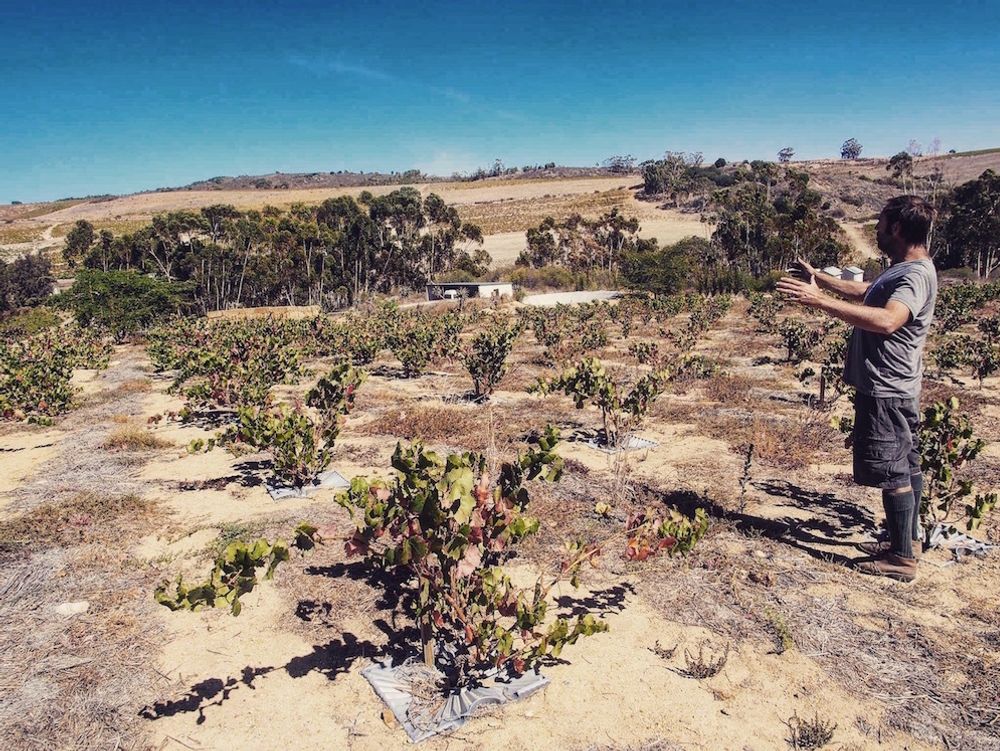
Eben Sadie
2018 also saw my first time to South Africa’s winelands. All those involved know how important they are to me and it was the trip of the year. Lengthy write-ups will appear separately to this piece as there is too much to say. For now, I will say, Reenen Borman’s Kottabos Syrah from the new cement vessel which I nicknamed The Spaceship at Boschkloof was next level. Walking the vines with Eben Sadie was one of the most important moments of my vinous life. Playing around with DILLIGAF in the cellar with Craig and Anne Wessels was great fun. Tasting the first vintage of Silwervis’ Chenin Blanc (2014) sans souffre was truly eye-opening, with magic sparking out of its core. It’s a wine that would make any sans-souffre doubters out there think twice. There was a half hour of pure euphoria where I sat with friends in the sun outside Johan Meyer’s cellar drinking just-disgorged Pinotage petnat where I thought, “this is why wine is the most astonishing liquid.”
I also visited the place where it all began mentally for me: Pieter Walser’s cellar.

Thierry Allemand
I found myself in Rhône for the first time, in the cellar with the inimitable Thierry Allemand. Tasting the Thierry Allemand Reynard 1998 with him was, like my time with Eben, one of the highlights of my career. Wines like this challenge our perceptions of wine as a mere liquid and makes us peer into our glass in utmost bewilderment at how this transferal of grape to glass is possible.
Birth year wines
It has also been the year of the 1991 wines (which I hope will continue every year!) I tasted DRC for the first time; in Echézeaux 1991 ‘guise. Angels winked.
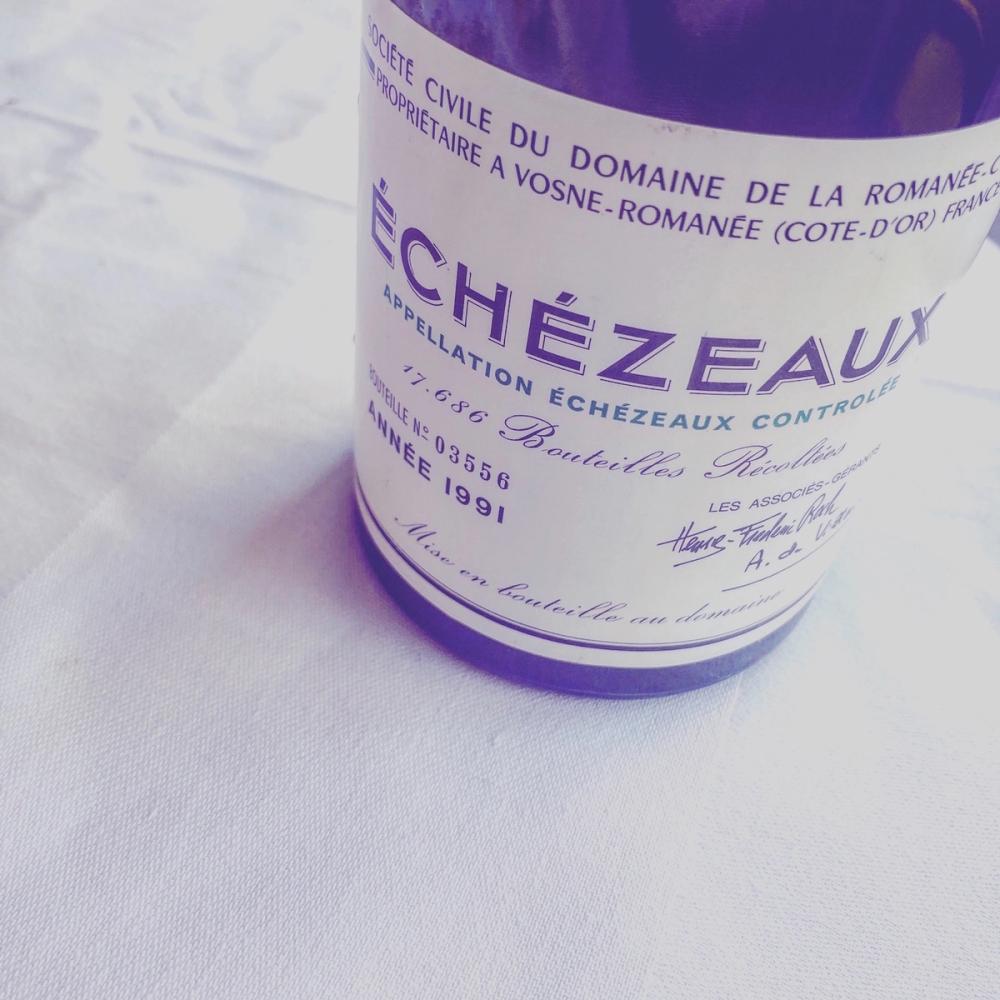
Louis Rémy’s Chambertin 1991 was subtly alluring with its many secrets beneath the surface; secrets that only fine aged Burgundies possess. Together with JM Boillot’s Puligny-Montrachet 1er Cru “La Truffière” 1991, a wine that metaphorically glittered on the palate, these are wines that mean my heart is still very much lodged somewhere in the limestone of the Côte d’Or.
A friend brought Genoux Alexis, Arbin, Mondeuse 1991 via his suitcase. I find myself pining for this wine often, so special it was. “Special moments like these take me entirely by surprise, take my breath away, and leave me pondering for many days.”
Joseph Swan’s Zinfandel 1991 made a surprise appearance; a “brooding, complete, profound bottle. 15.6% ABV and you would have no idea; it was totally integrated and sang.
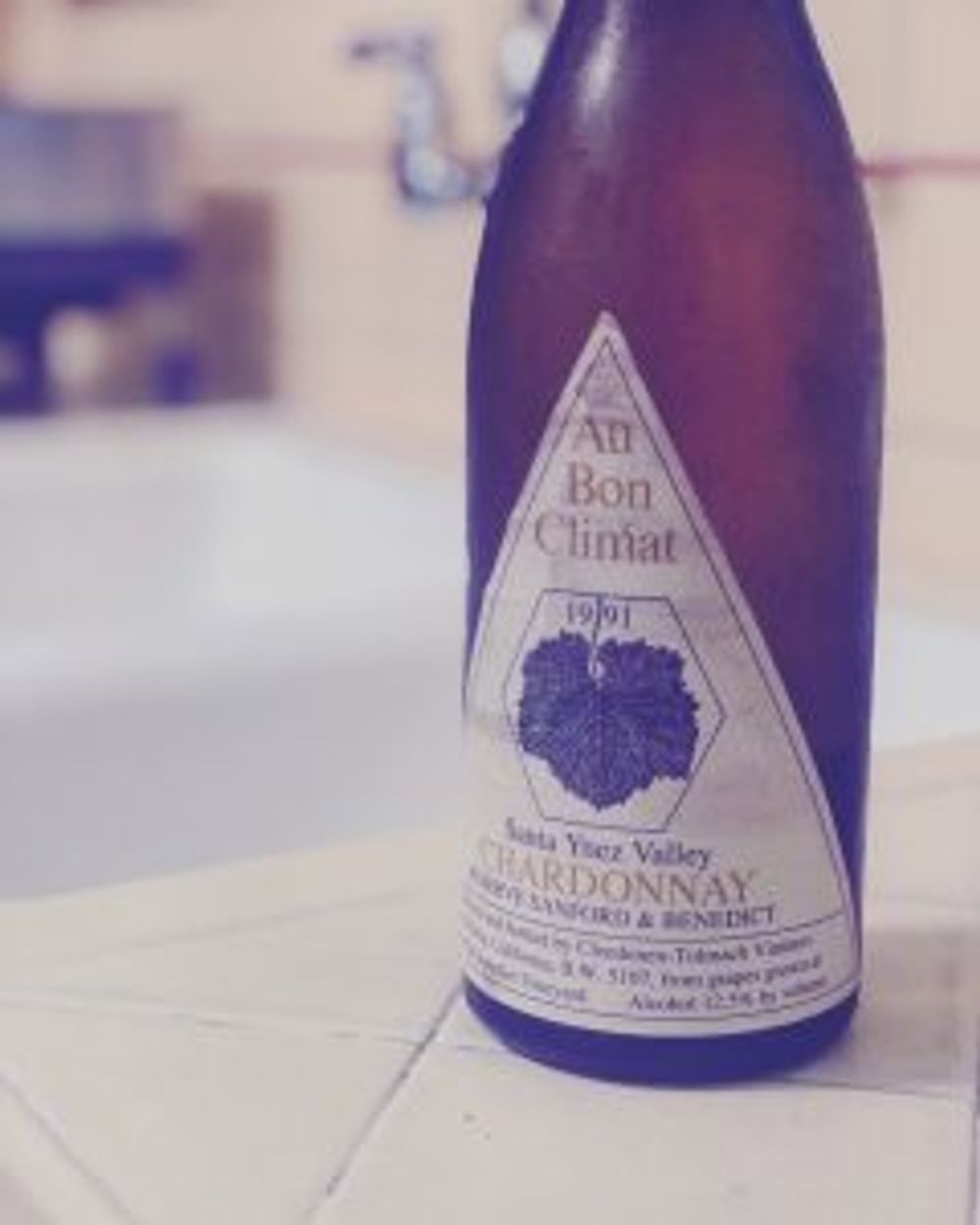
Au Bon Climat Chardonnay 1991 was fresh as a daisy and the antithesis of Californian Chardonnay. It was elegant, pure, vibrant and shows what diatomaceous earth, the Queen of Grapes, and good hands can do.
I drank Bernard Gripa’s Saint-Péray 1991 in Beaune, outside in the rare warm late October sun with cheese. Oh, how Marsanne can age, and oh, how that is an overlooked fact.
The year saw Jean-Louis Chave’s Hermitage 1991 side by side with Jaboulet’s Hermitage La Chapelle 1991. What a forceful duo; this encounter was the embodiment of Hermitage puffing up its chest and saying; “hey, look at me. I seem younger than you do.” It did.
“Other”
My Champagne of the year has been that of Stroebel. Sans souffre, it is pure, vivant and expressive. Nicknamed “Farmer Champagne,” this wine takes it one step further than Grower Champagne; because please, let us take the notion of terroir and the importance of farming and embed it as deeply as we can in this region.

Diana Snowden
I headed back to Burgundy twice, time spent with Diana Snowden was as wonderful as always, and delving into discussion about freshness via stem inclusion over an Echezeaux 2003 reaffirmed our own beliefs on the topic. A visit to Marc Soyard in Dijon gave me great enthusiasm for the northerly parts of Burgundy under the experimental nose of a very smart young man. A quick pitstop in Chablis saw an in-depth tasting of Thomas Pico’s wines, and we reunited in London the next week when he came for the first time in many years. This man humbly makes some of Chablis’ finest wines.
A whirlwind German tour in July saw me fall for Frühburgunder and Lemberger. I also wandered along a dirt track at night in midsummer Nahe with Helmut Dönnhoff. This is etched in my memory, as is his Brucke Eiswein 2015 and our intense Riesling study.

I unearthed one of my favourite white wines in the world: Bizot’s Les Violettes 2005, and drank it at home in the sun with my father and one of my best friends, in utter peaceful bliss.
A good part of the year was spent examining wines in a Scythian mindset. Valentini’s Trebbiano 2001 joins the Bizot to stand shoulder-to-shoulder as my White Wines of the Year. In the same sitting as Valentini, a group of friends and I popped the cork to NJORD 2014, a Danish Frühburgunder. Yep, I said it. What’s more, it was the wine of the tasting to some. I hope to visit next year. You can read more about what the hell it means to Drink like a Scythian here.
I was lucky enough to experience Overnoy a few times. Every time is momentous and emotional. Vin Jaune also continues to be one of my desert island wines, but this year a bottle of Domaine Plageoles sous voile 1983 saw me hold my head in my hands and shake my head in awe. How a 35-year-old wine can taste as though it came out of barrel yesterday is beyond me.
A glass of Coche-Dury’s Puligny-Montrachet Les Enseignères 2009 sat on my tongue for what felt like eternity and whispered confidently to me that Chardonnay is indeed Queen.
Stéphane Bernaudeau continues to baffle us; Les Nourrissons in particular made me sit up straight. I described it as “mind hugging,” whatever that means.
Dard et Ribo have made a fair few appearances and continue to lull me under their peppery spell.
Up the road from the Rhône, Beaujolais has its special place in my heart. Time spent in cellars with the Chapels, the Lapierres, Yvon Métras, Pierre Cotton, Fabien Duperray, Paul-Henri Thillardon, Edouard Parinet and many more have been deeply important.
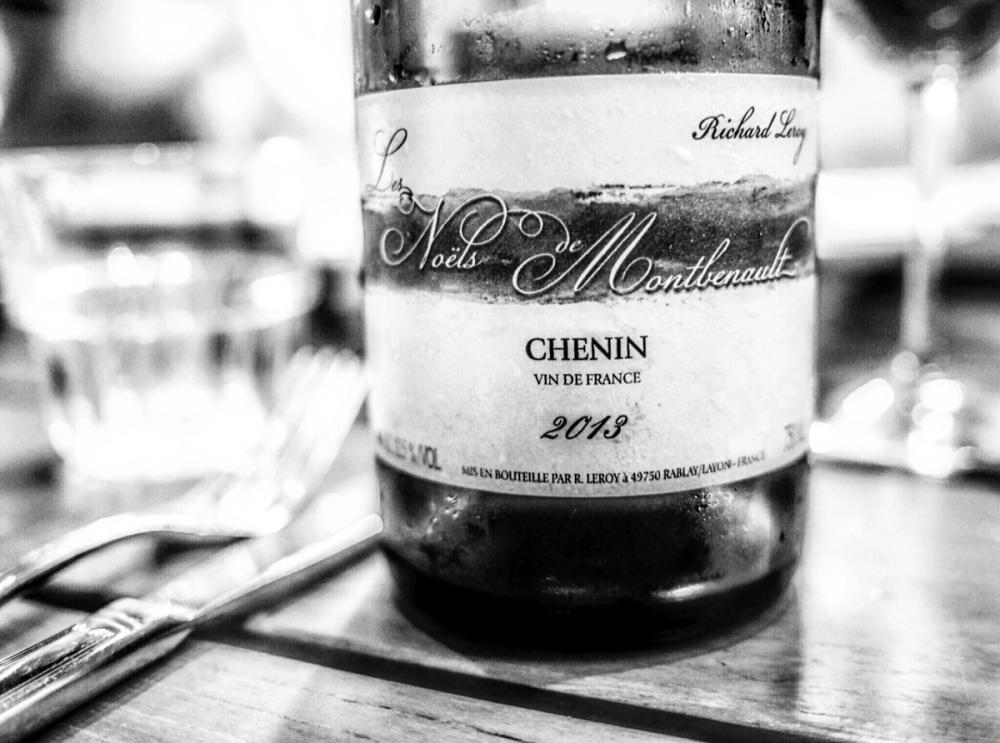
It’s definitely also been the year of Chenin. I tasted Richard Leroy Les Noëls de Montbenault 2013 for the first time in New York State on a day that was so humid we all could have melted, but Chenin like this demands attention and made us forget about the sweat. Regular tasting notes flew out of the window and instead my pen took a mind of its own accord and wrote, “Chenin: Chenin that reverberates, Chenin that makes our hairs stand on end and Chenin that raises so many questions yet that answers so many simultaneously.”
On the same day I tasted the chalk to Chenin Blanc’s cheese; total vinous opposites; the Chëpìka hybrid petnats (Delaware and Catawba); a project from Nathan Kendall and Pascaline Lepeltier MS. These are bottles that are born from joy, experimentation, determination and dedication to farming. At the same tasting, I bumped into Ethan Joseph, and tasted his Iapetus Tectonic (La Crescent). All were both emotionally and intellectually brilliant – did someone say #InDefenseOfHybrids ?
As well as the hybrids, a week of touring around New York State very much convinced me that 2019 will be the year of NY vinifera wines. At Westbury Communications, we are working on an exciting and ambitious project for 2019 – keep your eyes peeled.
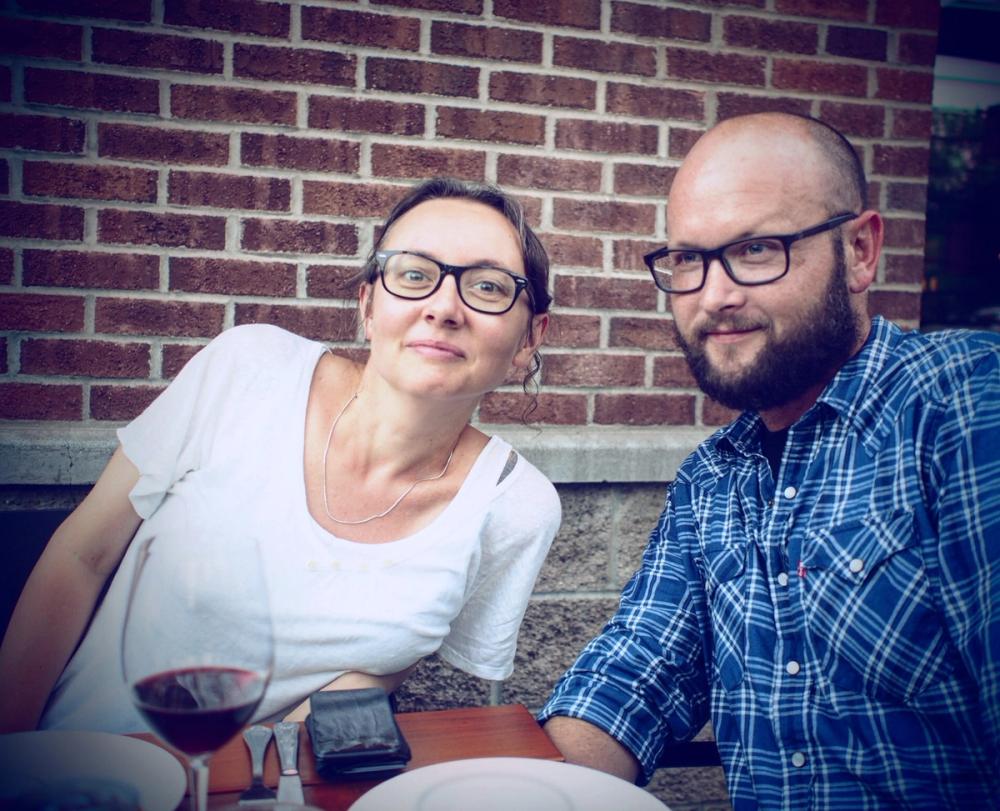
Pascaline Lepeltier and Nathan Kendall
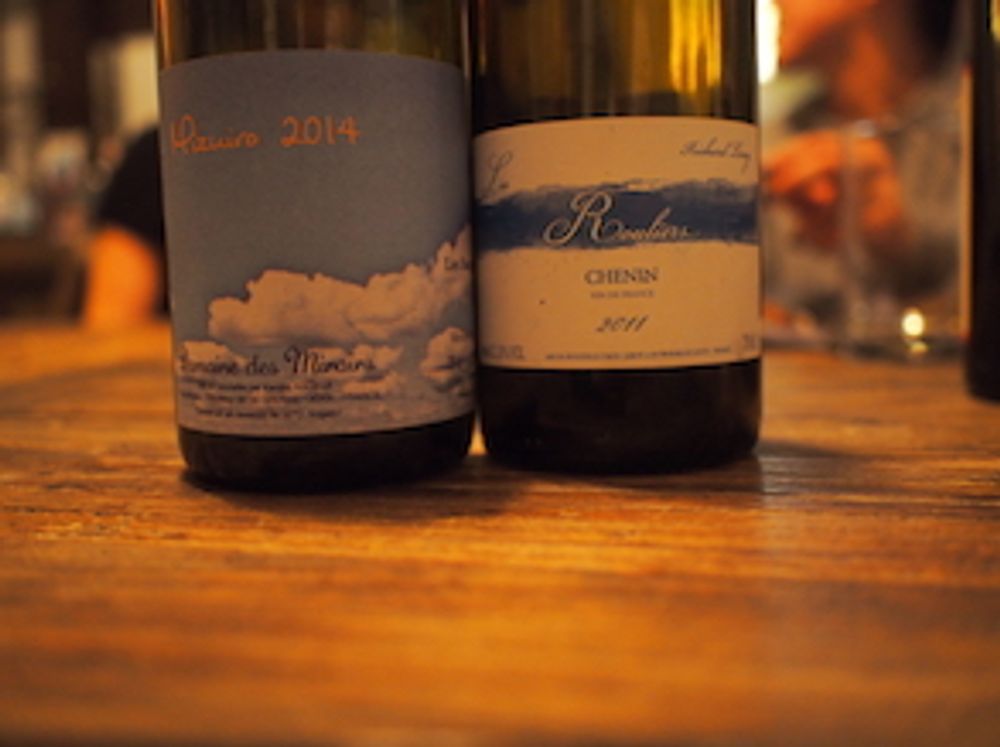
I had the joy of sitting down to compare the Richard Leroy Les Rouliers 2011 side by side with Domaine des Miroirs Mizuiro Les Saugettes 2014 in Santa Barbara in September, in the company of wonderful friends who had spent the day inspecting diatomaceous earth and debating reduction. It was an insight into the mastery of said reduction; the Miroirs expressed matchstick juxtaposed with rock salt; very textural and poised on the front palate. The fruit was citric, with a herbal, rosemary lift. The Leroy had a rumbling and sat horizontally in the mouth, across the back palate – more of volcanic, dark smoke, stony gunflint texture, with peach and apricot stones.
Earlier that day I also tasted The Combe Cuvée August 2017 from Ballard Canyon. It is the finest Chenin Blanc I have tasted yet from the US. Peter, Jessica and Raj, big fist bump to you. This is what Fine Wine is about.
I tasted the Domaine des Miroirs Ploussard 2016 for the very first time this year. It’s the colour as much as the taste that remains ingrained in my mind. It seemed to me somehow that the energy of that wine pulsed through its very core; that is what gives it this resplendent, luminous shade that simply is impossible to describe. At the time, I wrote, “this wine is a vinous expression of love for the earth from which it comes. The expected fresh raspberry and strawberry flesh of Ploussard but with so, so much more. Tight pink peppercorns, linear acid structure, wild thyme, wet earth, wet rocks; as pure as pure red wine can be and like a ballerina en pointe.”It remains the same in my mind as I think back. The empty bottle sits on my desk and I gaze at it frequently wondering why I am not in possession of magic powers to return it to its full state.
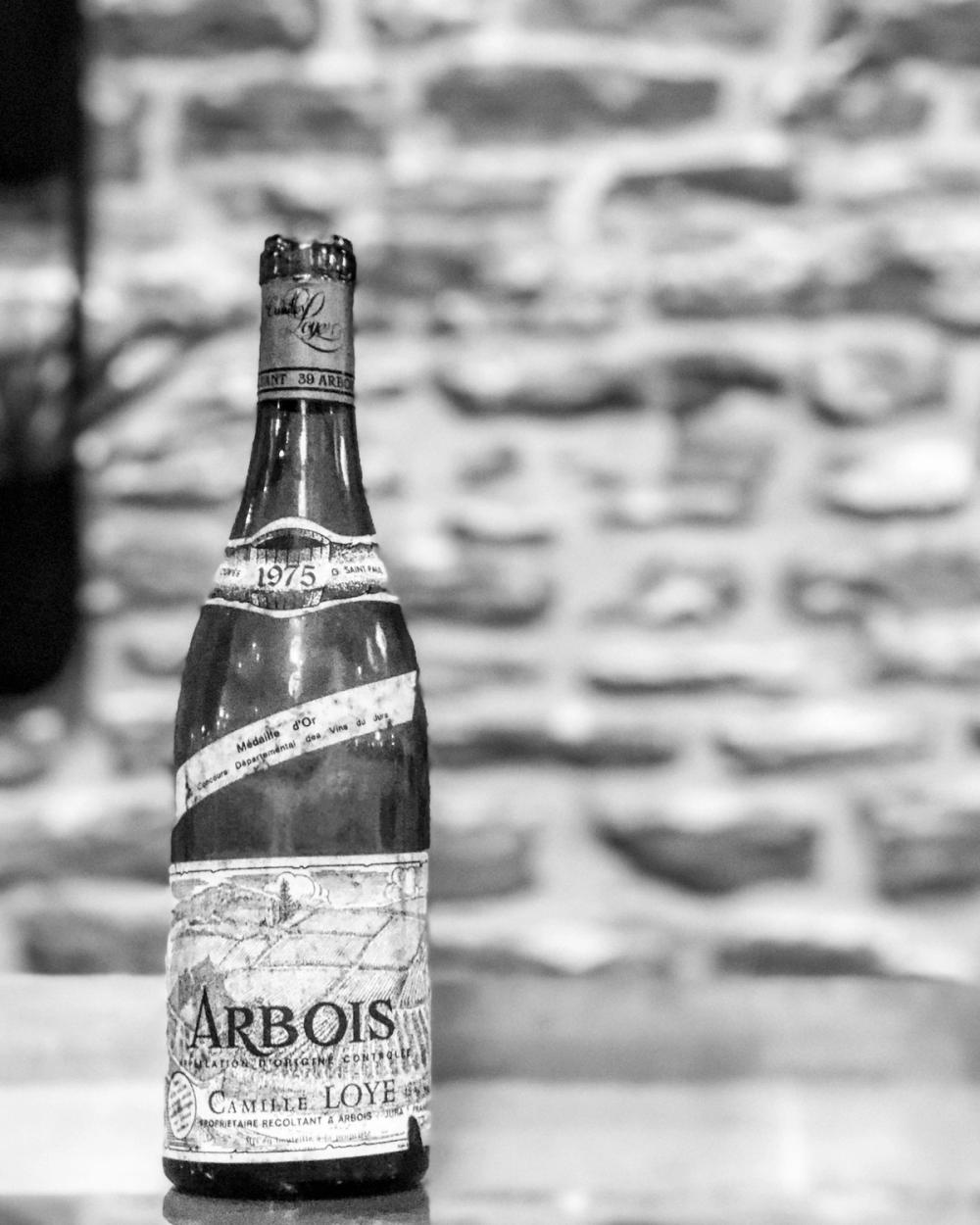
Friends and I got blinded on a Camille Loye Arbois Chardonnay 1975 by the team at Aux Terrasses, I called old Jura but no way did I expect a ’75. Thank you for your incredible hospitality, this bottle was singing and defiantly giggling at its own age.
In New York, a mystery bottle in a line-up of aged Bordeaux blew our socks off. The culprit was Taken from Granite 1996; a subtle, elegant, pure and charming wine that speaks of earth and cool but sunny days. It is also a wine that sits on a dark, fascinating piece of history which I will retell in a write-up of its own.
On a warm September’s evening overlooking Napa’s Swan Lake in the company of its maker and friends, we tasted the first ever Scholium Project; a 1999 Sangiovese, from magnum. It made that little corner of the world stand still just for a second.

Alex Kongsgaard
The most important winery visits of the year were down the rabbit hole of the Kongsgaard cellars, and my return to visit Rod Berglund at Joseph Swan. Any moment shared with Rod Berglund is treasured deeply. The states of Sonoma and Napa would not be where they are today without these two families of wine.
A brilliant visit with Sonoma Vintners saw a crusade of buyers, sommeliers and media flock to Sonoma for tastings, winery visits and meetings. The standout here was spending time at night in the cellars of Kosta Browne. I was so bowled over by the wines that I returned the next day to speak with Nico Cueva more about the developments in the cellar.
The visit also reaffirmed the outstanding quality of Californian wine. There are too many to mention here, but Jamie Kutch, Clay Mauritson, Pax Mahle, Jaimee Motley, Sam Bilbro, Megan and Ryan Glaab, Leo Steen, Raj Parr, Brenna Quigley, Taylor Berkley et al., you all rock, and you all have individual pieces coming.
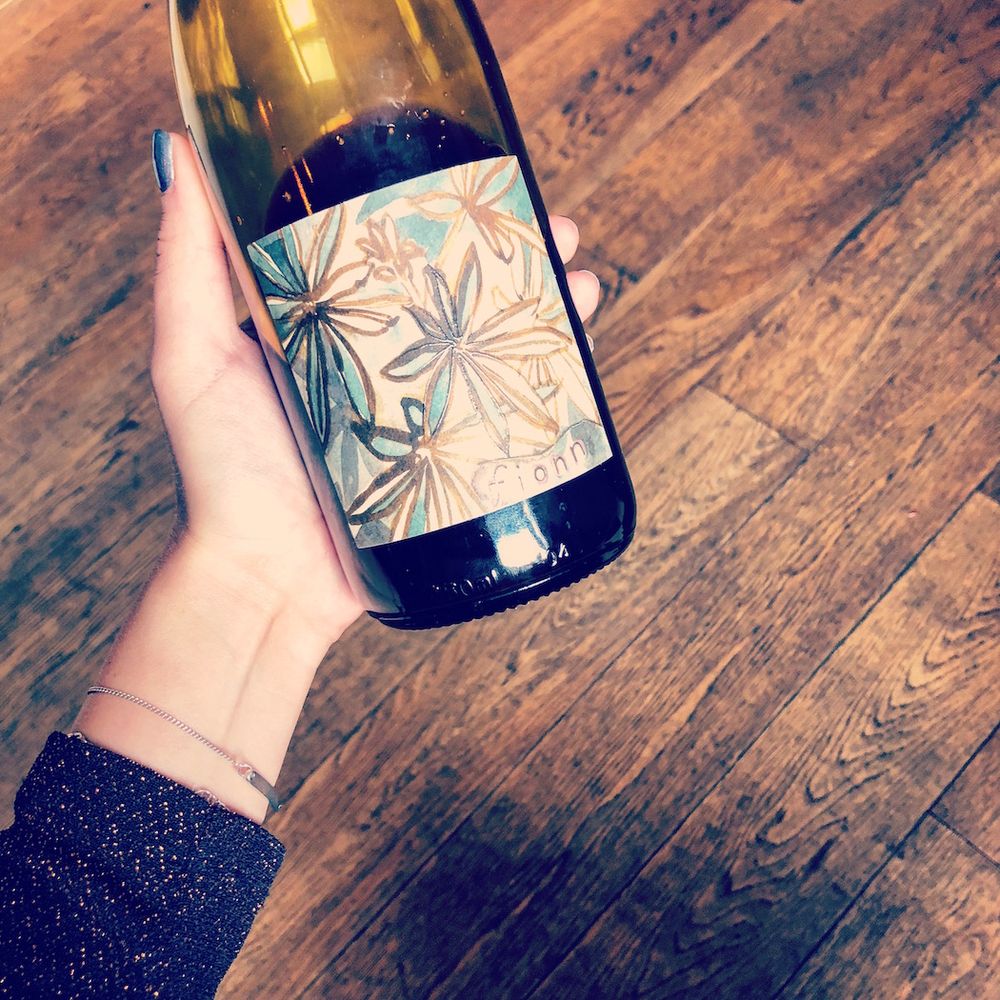
I was also introduced to Oregon’s Hiyu Wine Farm this year. Smockshop Band Fionn Zinfandel 2016 made my tastebuds proclaim, “woooah, pause. WHAT?!” I have yet to meet Nate Ready (I feel this is for 2019), but I already know these are more than simply thought-provoking wines. My notes read, “so much complexity I could have fallen off my chair and made a run for it with the bottle through the streets of Shoreditch. Unequivocally beautiful and so comfortable in its own skin.”
Château Montelena 1978 made me stop in my tracks, and the bottle stayed by my side. I wrote “It may be the first time I’ve ever experienced reverse evolution in wine, and it is one of the most special bottles I’ve ever had the joy of tasting.”
Lastly, it’s the year I fell back in love with Bordeaux, much to my father’s relief. I was very lucky to cut my teeth on claret, and I’ve enjoyed some earth rattling Bordeaux wines this year. Château Latour 1978 and Château Latour 1991 took the joint Bordeaux Of The Year Crown. Léoville Las Cases 1990 was so distinctive in its graphite (what I describe as black minerality) quality, that I managed to call the Château blind (not the vintage, but “early 90s”). My father has a (tiny) stash of Le Dôme 2003, which I have tasted twice this year, and loved dearly each time. I wear my love for Cabernet Franc on my sleeve.
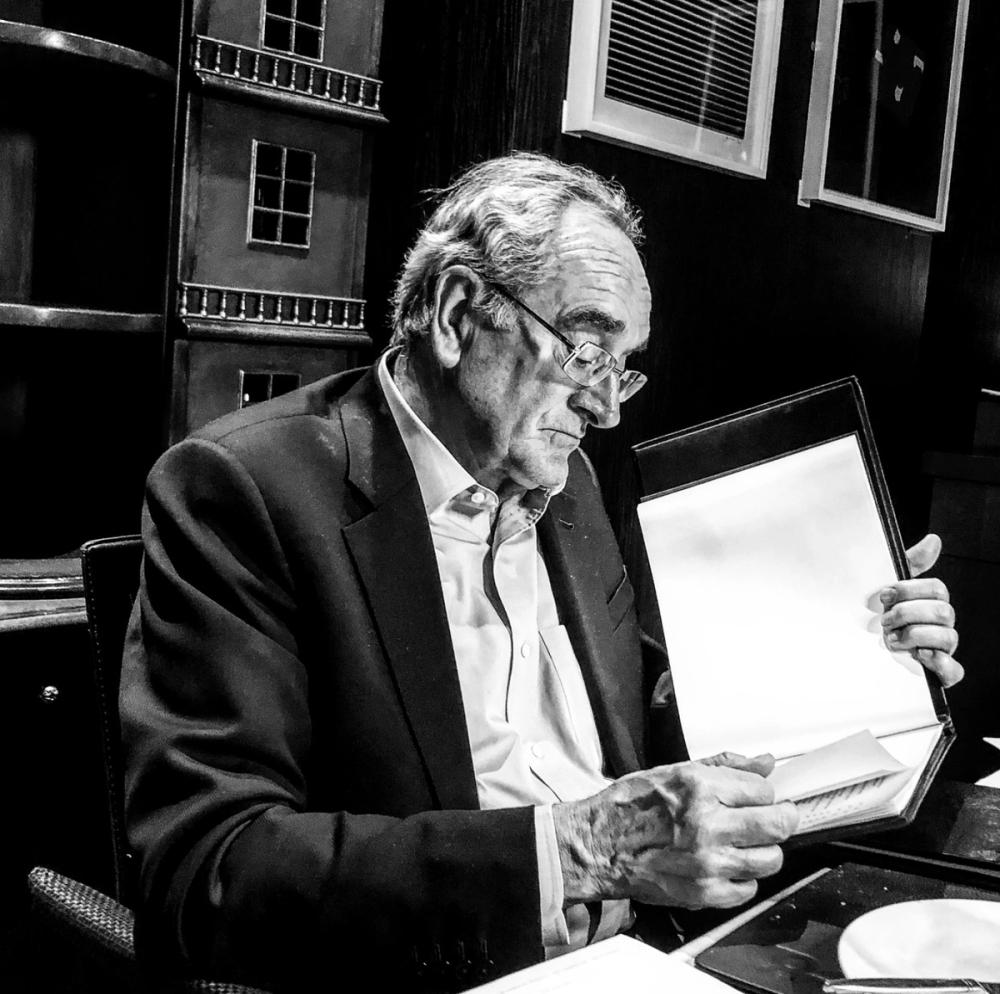
Jean-Claude Berrouet
On the topic of Bordeaux, my most memorable dining partner was Jean-Claude Berrouet, whom I sat next to at dinner and with whom I discussed the parentage of Merlot. He quizzed me about her mother, to which I replied, but of course, her name is Magdeleine Noire de Charentes.He laughed, and this reaffirmed my love of ampelography. I even met a grower who has a plant of Magdeleine in South West France.
Friends and I have a dining/tasting/drinking club named after her, Merlot’s Mum,and a swathe of crazy bottles have been popped this year. These are friendly get togethers and I do not take notes (although perhaps I should start) and there are too many to mention, but perhaps Marc Sorrel’s Hermitage Les Rocoules 1999 was victorious. The wine world has never been as exciting as it is now, and two bottles from our tasting group were testament to this. Tresomm’s Aligoté 2017 (fromValle de Guadalupe, Mexico) was tasted blind. It was widely enjoyed and this is testament to what is possible in the world of wine today. Pinard et Filles’ Gamay 2017 was also one of these bottles, because we all know Gamay will conquer the world (wink), and Québec is showing its peacock feathers with this example.
And, I think that’s it. Thank you endlessly to those that have shared the bottles with me and patiently endured my endless questions, and to the people that have tended the vines and made the wines.
2019, you have quite a lot to live up to.
Happy New Year!
